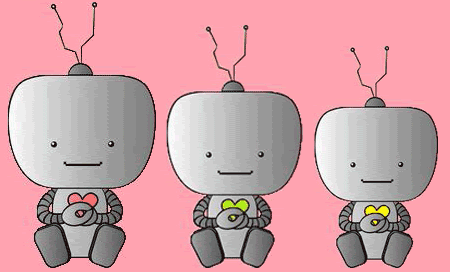
information
connections
journal
|
A little info you may want to know! ♥ Dobrý den, Helloooo! ♥ Welcome to my dnt blog! :D I am Hiew LiTiang, or you will want to call me Pinky! :D Currently studying @ Huayi and number6 in 1e2. Robots are adorableeeee! I ♥♥ robots, they live at your room, find them one day! :D Visit my blog too, http://o-hloved.blogspot.com ♥♥ This blog is officially opened on the 7thDec. buying robots♥ shoppers♥ Currently Playing: About You Now - Sugababes  Ciaooooo, GoodBye! ♥ Ciaooooo, GoodBye! ♥
|
Hey peoplee, tag to be link! ♥ ♥ ♥ ♥ ♥ ♥ ♥ ♥ ♥ ♥ ♥ ♥ ♥ ♥ ♥ ♥ basecode by: (detonatedlove♥) picture by: (♥ ♥) changeNavigation('id') script: (ambivalente) |
8:33 AM | Friday, December 14, 2007
Category of subject - Toy Today, I am going to talk about Kaleidoscope. Some History of the Kaleidoscope! It is known as Kalos, eidos and skopos to the ancient Greeks, which means beautiful, form and view respectively. It is reinvented by Scot Sir David Brewster in 1816, while he was conducting an experiment on light polarization and it was patented in 1817. This science tool, is quickly copied as a toy. Brewster believed that he would made money from his popular invention, but he was patent allowed others to copy his invention. In the early products often sells over $1,000. Kaleidoscope is a tube of mirrors containing coloured beads, pebbles, etc. The viewer will looks into one end and lights enters from the other end, reflecting the mirrors. For a normal kaleidoscope, it usually have 2 rectangular mirrors, setting them at 45o which makes 8 duplicate images of the objects. Following, 6 at 60 o and the other 4 at 40 o. We, the viewers have to rotate the tube and the tumbling of the coloured objects shows us the various colours and patterns. It will show up a beautiful symmetric pattern because of the reflections in the mirrors. Here a series of the various patterns inside the Kaleidoscope! (Credit - Deviantart) Arent the coloured beads/pebbles beautiful? :D Nowwwww... I am going to introduce you guys with a 2D type of Kaleidoscope! It have the intersection of two or more lines of reflection symmetry. The part of the kaleidoscope which holds objects to be viewed is called an object chamber or cell. Object cells may contain almost any material. Sometimes the object cell is filled with liquid so the items float and move through the object cell with slight movement from the person viewing. Here's an example of the 2D type of Kaleidoscope! :D (Credit - Sister's Kaleidoscope! [:) Personal Comments: Scot Sir David Brewster's invention was great! :D My sister bought the 2D Kaleidoscope at Europe, the glass is cleared and you can take it to look at different things, you can rotates it and its just like the Kaleidoscope! Labels: Second Post♥ |
  
|

